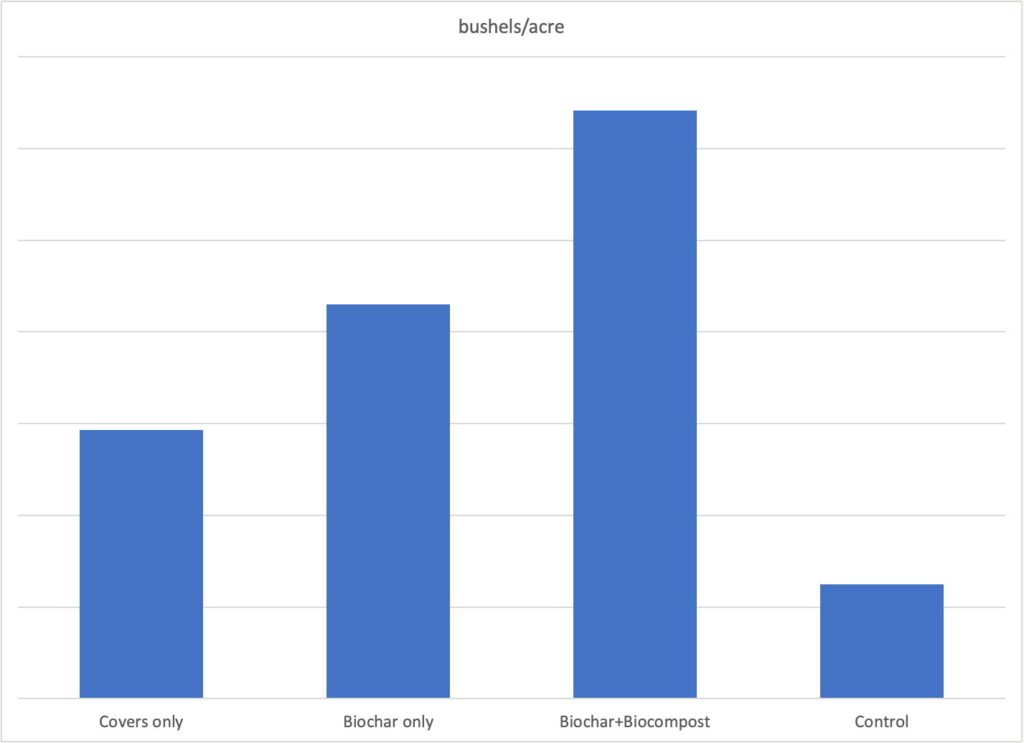Maize, Biochar, Biocompost
Wendy Munson-Scullin December, 2023
Over the last 3 years, we’ve been adapting techniques we’ve learned in the process of researching pre-contact garden systems – a link to that paper is here. Precontact means indigenous gardeners, people who worked in a wide variety of landscapes and climates using a wide variety of techniques.
If you do regenerative gardening or agriculture, you know you have to let the soil and plants teach you. Let them beat you up a little, maybe, it will parse out over time.
Quickest background possible: A garden is a paradox. You remove vegetation that was managing the soil to grow something else. Now you need to replace the services and service-providers you removed by figuring out what your inputs will be if you want a high-productivity system. A loop between forest or woodland and hearth and soil systems is an option. People did use charcoal, ash, biochar and soil additives in their gardens. Not necessarily always.
We manufactured biochar and activated it, including the ash. We created biocompost, which is a static-pile version of composting especially rich in humic acids, to stand in for a rich soil additive (this was inexpensive and allowed us to have the desired chemistry in the organic matter – to mimic a lush grassland or shallow wetland).
Design
6 no-till plots were created, 2 which were divided into biochar-only, or biochar + bio compost, 2 “control plots” which had no additives, and 2 plots with summer cover crops. All plots had fall cover crops. Iowa’s growing seasons are getting drier, it was drought all 3 years. And because the test plot is silty loam with shallow clay loam and was formerly a hayfield, the topsoil is somewhat depleted. We also are on a pH slippery slope of about 7.5, so using biochar is tricky without bumping that pH any higher.
In year 2, a difference could be seen in plant vigor where there was charcoal and biocompost.
In year 3, there was a statistically significant difference in yield in the charcoal + biocompost plots. Those inputs were 1) not large, 2) surface-applied only, 3) applied only at plant base (i.e. side-dressed). You can see that in the chart below.
Worth mentioning: We were running around 2.5% to 3% organic matter – so organic inputs were always going to be great. But the biocompost and biochar had a synergistic effect for a variety of reasons. Gophers hit the control plot hard. Their tunnels provided channels for drying air under some plants, even after they were abandoned. That control plot result is just sad.
I didn’t put units here; these results were gratifying.

What does this have to do with archaeology and phytolith/humic acid analysis? This is experimental archaeology derived from the former. And it’s also forward-looking because this is scaleable. Biocompost is humic-acid rich. Some soil-management practices are especially humic-acid promoting. Biochar isn’t so scaleable in places where there isn’t logging, nor practical where soil pH is not low. These specific inputs “activate” the soil in several ways, and the plants respond to that. There’s 3% organic matter that’s a little bit sedentary, and then there’s 3% organic matter that is full of life and energy and that’s what you’re seeing in these results.
And while these are my results (don’y copy them without asking first) – they are not my ideas. I don’t claim to have the full picture.
